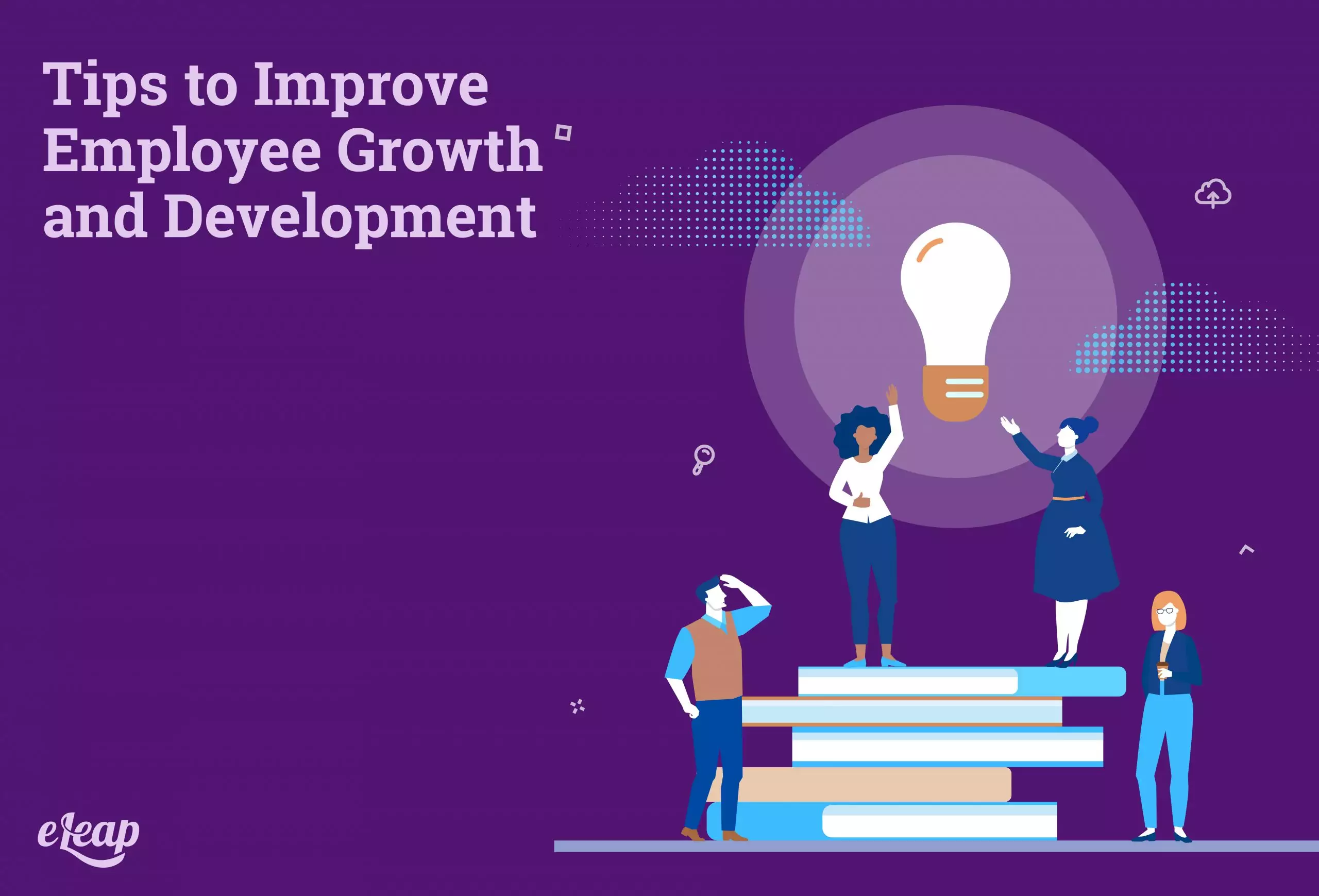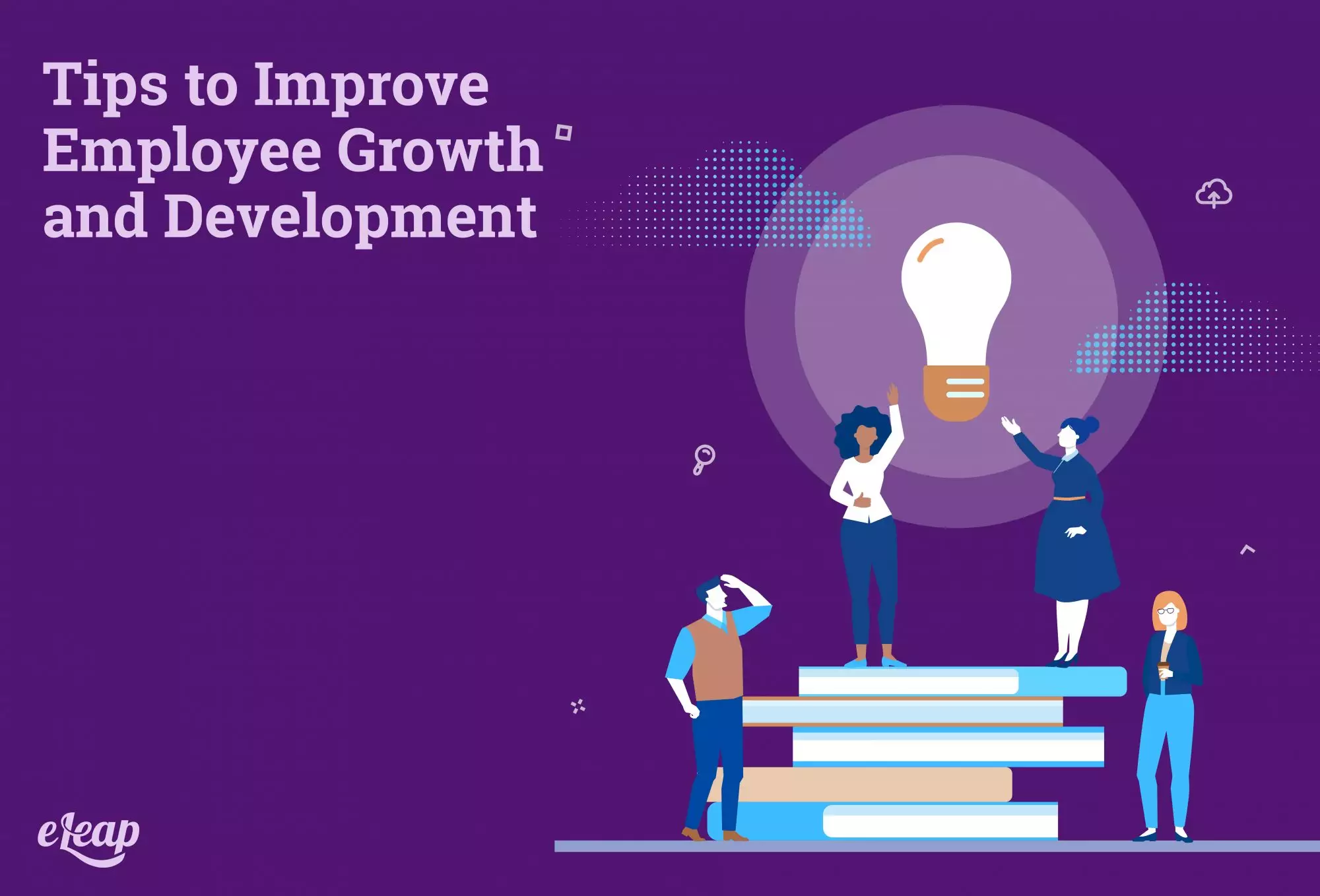Tips to Improve Employee Growth and Development

Few things are as critical to running a successful business today as encouraging employee growth and development. In the past, it wasn’t so essential. You hired an employee to perform a task, and they might stay in that position for the duration of their employment.
Today, employees demand career progression opportunities, or they will seek them out with your competitors. Growth and development are the keys to giving them those opportunities, but how do you ensure you have the right options on offer and encourage employees to take part in your initiatives? In this post, we’ll delve into some of the most important tips for improving employee growth and development.

Get Management Onboard First
While your learning management system and individual upskilling options are of obvious importance, you need buy-in from the top down first. Without support from your managers, employees aren’t going to take the leap, either. There are a couple of reasons for this.
The most obvious is that if leadership doesn’t lead by example, then employees won’t assign the appropriate value to learning and development. So, if managers denigrate the idea of development and growth being important, then those they manage will likely adopt a similar attitude.
Another reason is that you need management to ensure employees have the time during the day to take care of learning and development. Managers may need to schedule additional staff so that employees who need to complete classes can take the time without the loss of personnel affecting department productivity, for example.
Commit to Frequent Upskilling
Once upon a time, what you learned was relevant and valuable for a long time. Perhaps for the duration of your career. Today, that’s not always the case. Everything is at risk of obsolescence.
New techniques, new technologies, new discoveries, new ways of thinking – all of these can render what an employee knows obsolete. The only way to cope with this, retain valuable talent, and reduce the time and costs involved with onboarding is to commit to frequent upskilling.
How do you do that? It really comes down to rethinking how you focus on learning and development. What’s the organization-wide focus here? How much value and emphasis do you place on it? How much do you encourage your team members to complete upskilling or development courses? These are just a few of the questions you’ll need to answer with an eye toward increasing the frequency.
Sit Down and Chart Career Development with Your Employees
You must communicate to your employees that you’re committed to their future and that you value them as team members. One way to do that is to sit down and chart out their career development with them. Doing this allows you to achieve a few key goals, including:
- Identifying a development path for the employee to follow
- Creating a plan of attack that allows the employee to move forward with skills development
- Identifies key skills and knowledge areas the employee will need to develop for the future
- Allows you to create a hiring strategy based on upskilling and in-house promotion supplemented by hiring for lower-level positions
- Shows employees that you want to work with them to improve their future, which reduces the chance of them jumping ship
Also, you should empower your employees to self-manage and monitor. Give them some degree of autonomy and you might be surprised at not only the rate of progress but the various areas of interest that they begin to explore.
Focus on Cross-Departmental Development
While you can and should help employees set and then pursue goals for their professional development, there’s a lot of value to be found in cross-departmental development. What does that mean? Really, it’s a smart business move that helps ensure that even if you do suffer from churn or attrition, you still have people who can deliver the services necessary for business operation.
Suppose you have department A and department B. In the normal scheme of things, employees in departments A and B would know how to do their jobs and would receive training based on those jobs, as well as their career goals. However, with a cross-department development initiative in place, people from each department would be trained in how to perform duties for the other department.
Not only does that ensure redundancy within the business, but it also opens up employees to new skills and new career potentials. Perhaps someone in department A realizes that they have a lot of interest in a particular job role within department B. That person could work with management to change their career path and find something that is more personally and professionally rewarding.
Focus on So-Called “Soft” Skills
You’ve probably heard of soft skills, and because of the name, you’ve labeled them as less important than hard skills. Sadly, soft skills are just as important to success, if not more so. For instance, if you lack communication skills, it doesn’t matter who accurate your accounting skills are. If you cannot collaborate with other people, it doesn’t matter how skilled you are in other areas.
Soft skills are essential for a functional workplace. Without strong interpersonal skills and related capabilities, your organization is just a collection of disparate individuals and not a cohesive whole. Focus on encouraging employees to develop the soft skills they need to help propel themselves forward.
Create a Balanced Strategy
Improving employee growth and development isn’t a once-and-done kind of thing. It’s not something you can accomplish with a single meeting. Instead, you need to create a balanced strategy. A strategy that helps employees focus on personal development, emotional balance, intellectual growth, physical health, and professional development.
Your employees are complex individuals. Attempting to extricate professional skills and focus solely on their development, to the detriment of the rest of the person, is a mistake. It’s one that we’ve made too often in our history. Instead, we need to learn to take a holistic view of people and develop them as individuals, including professional and personal elements, to achieve real growth and success.